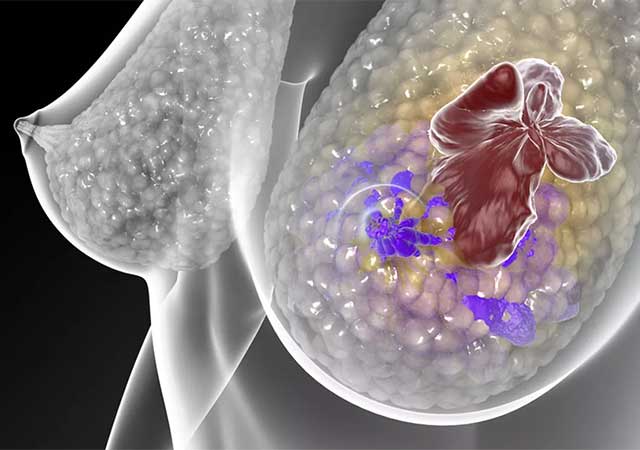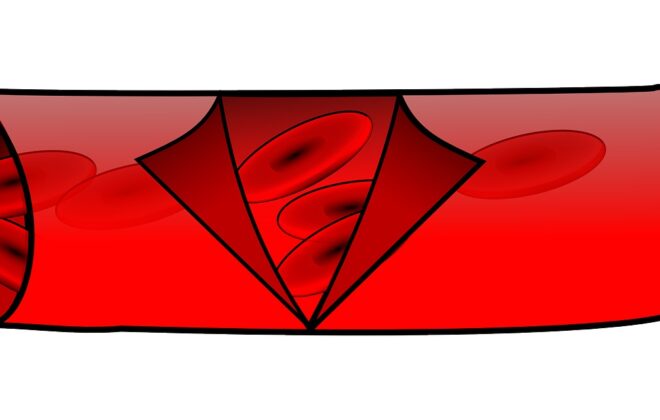Breast cancer classification using AI
Researchers at the Paul Scherrer Institute PSI and the Massachusetts Institute of Technology MIT are using artificial intelligence to improve the categorisation of breast cancer.
Not all cancers are the same. Some tumours grow very slowly or hardly ever change from a comparatively harmless pre-cancerous form to a life-threatening form. In men, this includes prostate cancer and, in women, a precursor of breast cancer in the milk ducts, known as ductal carcinoma in situ. In 30 to 50 percent of cases, this form, abbreviated to DCIS, develops into a threatening invasive breast carcinoma. Because DCIS is highly curable, doctors generally recommend treatment. Until now, doctors have lacked the necessary indicators to reliably decide which tumours will remain benign and which will become a life-threatening invasive ductal carcinoma (IDC).
This lack of knowledge in characterising breast cancer prompted a new study, led by G.V. Shivashankar, Head of the Laboratory of Nanoscale Biology at PSI and Professor of Mechano-Genetics at ETH Zurich, and Caroline Uhler, Director of the Eric and Wendy Schmidt Centre at the Broad Institute and Professor of Electrical Engineering and Computer Science at MIT. The researchers have developed a system for analysing images which uses artificial intelligence to reliably determine the stage of the disease. “Our work opens up a unique approach to identifying the stage of DCIS using images that show how the DNA is packaged in each individual cell. Collecting this data is simple and inexpensive,” explains Shivashankar.
Women live with uncertainty when making treatment decisions
DCIS accounts for about 25 percent of all breast cancer diagnoses. The cells lining a patient’s milk ducts look different from healthy tissue, and often microcalcifications are visible. Treatment can take the form of radiotherapy, hormone therapy or surgery. In clinical practice, doctors use a process known as grading to determine the prognosis for DCIS and select a suitable therapy. This involves classifying the amount of change and assigning the result to one of seven different categories. These describe features such as the size of the DCIS, the appearance of the cell nuclei, whether it has grown (hyperplasia), whether the cells have entered neighbouring tissue (invasive), whether they have spread into lymph or blood cells (aggressive) or whether they are in the process of forming secondary tumours (metastatic).
However, the progression from DCIS to a serious form of IDC is by no means a certainty – 50 to 70 percent of cases remain benign. But which? Scientists are pursuing different approaches to make their forecasts more reliable. For example, sophisticated imaging technology is being used to identify indicators of the risk posed by an early form of the disease. Another approach involves extensive transcriptome analyses. These use sequencing to determine how many and which genes are active in suspect cells at a certain point in time. However, these approaches have not yet been tested in everyday clinical practice, and they are too complicated and too expensive to be practicable. For the women concerned, deciding on the right treatment remains fraught with uncertainty: they face the prospect of undergoing treatment that may not only be unnecessary, but could also harbour the risk of side effects.
AI improves DCIS staging
The current study shows that artificial intelligence (AI) can improve staging using data that is easy and inexpensive to collect. The researchers, led by Shivashankar and Uhler, trained a machine learning algorithm on 560 tissue samples from 122 patients. These had been stained with the dye DAPI, which makes the chromatin in the cell’s nucleus fluoresce. Chromatin consists, among other things, of DNA and proteins. Based on its appearance, conclusions can be drawn about the organisation and thus the activity of the DNA in the cell nucleus. After a learning phase, the AI model was able to identify patterns in the tissue sections that matched the differences identified by human pathologists. “Our analysis shows that chromatin images, which are cheap and easy to obtain, together with powerful AI algorithms, can provide enough information to study how the cell state and tissue organisation change during the transition from DCIS to IDC, and thereby accurately predict the stage of the disease,” explains Uhler.
The researchers believe that this kind of tumour classification based on AI and chromatin imaging has great potential. However, before it can be used in practical applications, numerous further studies are needed to demonstrate the reliability and safety of the approach, including long-term monitoring of DCIS patients.
Full bibliographic information
Published on 24/07/2024 by Paul Scherrer Institut (PSI)
About: Unsupervised representation learning of chromatin images identifies changes in cell state and tissue organization in DCIS
By: Xinyi Zhang, Saradha Venkatachalapathy, Daniel Paysan, Paulina Schaerer, Claudio Tripodo, Caroline Uhler, GV Shivashankar
Article: Nature Communications, 20.07.2024
DOI: 10.1038/s41467-024-50285-1





